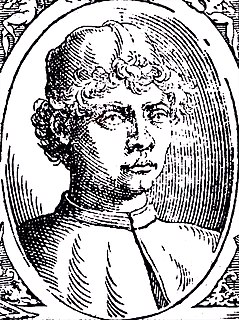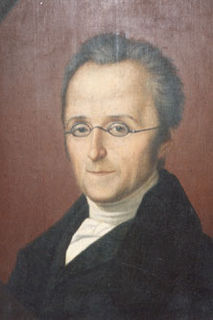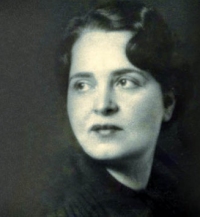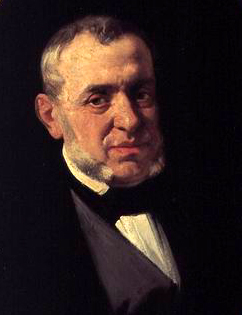Related Research Articles

General Gabriele D'Annunzio, Prince of Montenevoso, sometimes written d'Annunzio, was an Italian ultra-nationalist, poet, playwright, orator, journalist, aristocrat, and army officer during World War I. He occupied a prominent place in Italian literature from 1889 to 1910 and later political life from 1914 to 1924. He was often referred to under the epithets Il Vate or Il Profeta.

Piero della Francesca, originally named Piero di Benedetto, was an Italian painter of the Early Renaissance. To contemporaries he was also known as a mathematician and geometer. Nowadays Piero della Francesca is chiefly appreciated for his art. His painting is characterized by its serene humanism, its use of geometric forms and perspective. His most famous work is the cycle of frescoes The History of the True Cross in the church of San Francesco in the Tuscan town of Arezzo.

Eleonora Giulia Amalia Duse, often known simply as Duse, was an Italian actress, rated by many as the greatest of her time. She performed in many countries, notably in the plays of Gabriele d'Annunzio and Henrik Ibsen. Duse achieved a unique power of conviction and verity on the stage through intense absorption in the character, "eliminating the self" as she put it, and letting the qualities emerge from within, not imposed through artifice.
Francesca is an Italian female given name, derived from the Latin male name Franciscus meaning 'the Frenchman' It is widely used in most Romance languages, including Italian, French and Catalan, and place of origin is Italy. It is derived from the same source as the female name Frances, and the male names Francesc, Francesco and Francis.

The cultural and artistic events of Italy during the period 1400 to 1499 are collectively referred to as the Quattrocento from the Italian word for the number 400, in turn from millequattrocento, which is Italian for the year 1400. The Quattrocento encompasses the artistic styles of the late Middle Ages, the early Renaissance, and the start of the High Renaissance, generally asserted to begin between 1495 and 1500.

Francesca da Rimini or Francesca da Polenta was a medieval Italian noblewoman originally from Ravenna, known for having been murdered by her husband, Giovanni Malatesta, upon his discovery of Francesca's affair with his brother, Paolo Malatesta. She was a contemporary of Dante Alighieri, who portrayed her as a character in the Divine Comedy.

Giovanni Placido Agostino Pascoli was an Italian poet, classical scholar and an emblematic figure of Italian literature in the late nineteenth century. Alongside Gabriele D'Annunzio, he was one of the greatest Italian decadent poets.

Francesca da Rimini: Symphonic Fantasy after Dante, Op. 32, is a symphonic poem by Pyotr Ilyich Tchaikovsky. It is a symphonic interpretation of the tragic tale of Francesca da Rimini, a beauty immortalized in Dante's Divine Comedy.

The House of Malatesta was an Italian family that ruled over Rimini from 1295 until 1500, as well as other lands and towns in Romagna and holding high positions in the government of cities in present day Tuscany, Lombardy and Marche. The dynasty is considered among the most important and influential of the Late Middle Ages. In the period of maximum influence, they extended their domains along the Marche coast, up to Ascoli Piceno, Senigallia, Sansepolcro and Citerna, and to the north, on the territories of Bergamo and Brescia.

Silvio Pellico was an Italian writer, poet, dramatist and patriot active in the Italian unification.

Karl Gustav Vollmöller was a German philologist, archaeologist, poet, playwright, screenwriter, and aircraft designer. He is most famous for the elaborate religious spectacle-pantomime The Miracle and the screenplay for the celebrated 1930 film The Blue Angel, which made a star of Marlene Dietrich.
Parisina is a tragedia lirica, or opera, in four acts by Pietro Mascagni. Gabriele D'Annunzio wrote the Italian libretto after Byron's poem Parisina of 1816.
Francesca da Rimini, Op. 4, is an opera in four acts, composed by Riccardo Zandonai, with a libretto by Tito Ricordi II, after D'Annunzio's play Francesca da Rimini. It was premiered at the Teatro Regio in Turin on 19 February 1914 and is still staged occasionally.
Literaturoper, a term coined by the German music critic Edgar Istel, describes a genre of opera that emerged during the late 19th century. When an existing play for the legitimate theatre is set to music without major changes and without the intervention of a librettist, a “Literaturoper” is the result. Although the term is German, it can be applied to any kind of opera, irrespective of style or language.
Francesca da Rimini was a medieval Italian noblewoman.

Frances Winwar(néeFrancesca Vinciguerra; 3 May 1900 – 24 July 1985), was a Sicilian-born American biographer, translator, and fiction writer.

Francesca da Rimini and Paolo Malatesta appraised by Dante and Virgil is a composition painted in at least six very similar versions by Ary Scheffer between 1822 and 1855; all are in oils on canvas. The paintings show a scene from Dante's Inferno, of Dante and Virgil in the shadows to the right viewing the murdered lovers Francesca da Rimini and Paolo Malatesta in Hell. It "could be described as Scheffer's best work".

Francesca da Rimini is an 1831 opera by Saverio Mercadante to a libretto by Felice Romani based on Silvio Pellico's play which had already been set twice and ultimately was set by fifteen composers. It was to be premiered in Madrid in 1831, but the premiere was cancelled and the opera lost. It was rediscovered and performed in July 2016 at the Palazzo Ducale, Martina Franca for the Festival della Valle d'Itria, Italy.

The second circle of hell is depicted in Dante Alighieri's 14th-century poem Inferno, the first part of the Divine Comedy. Inferno tells the story of Dante's journey through a vision of the Christian hell ordered into nine circles corresponding to classifications of sin; the second circle represents the sin of lust, where the lustful are punished by being buffeted within an endless tempest.
Ukō Washio(鷲尾雨工, April 27, 1892–February 9, 1951) was a Japanese novelist. He is best known for his Akutagawa Prize-winning novel Yoshinochō Taiheiki (吉野朝太平記).
References
- 1 2 Healey, Robin (1998). Twentieth-century Italian Literature in English Translation. p. 5. ISBN 0-8020-0800-3.